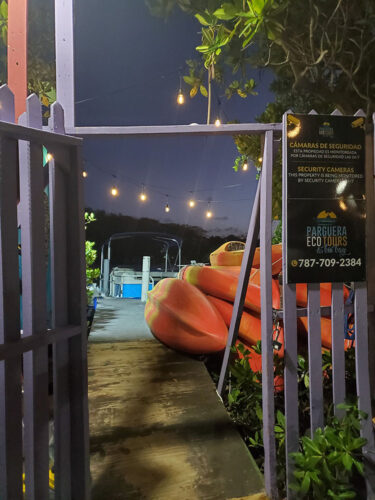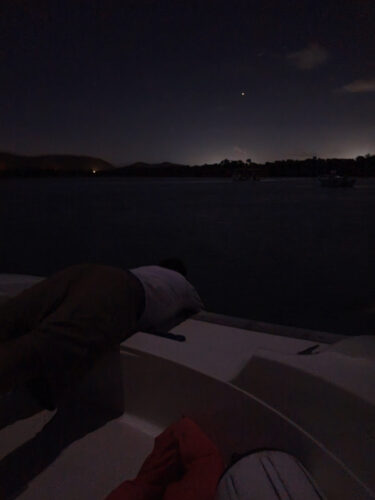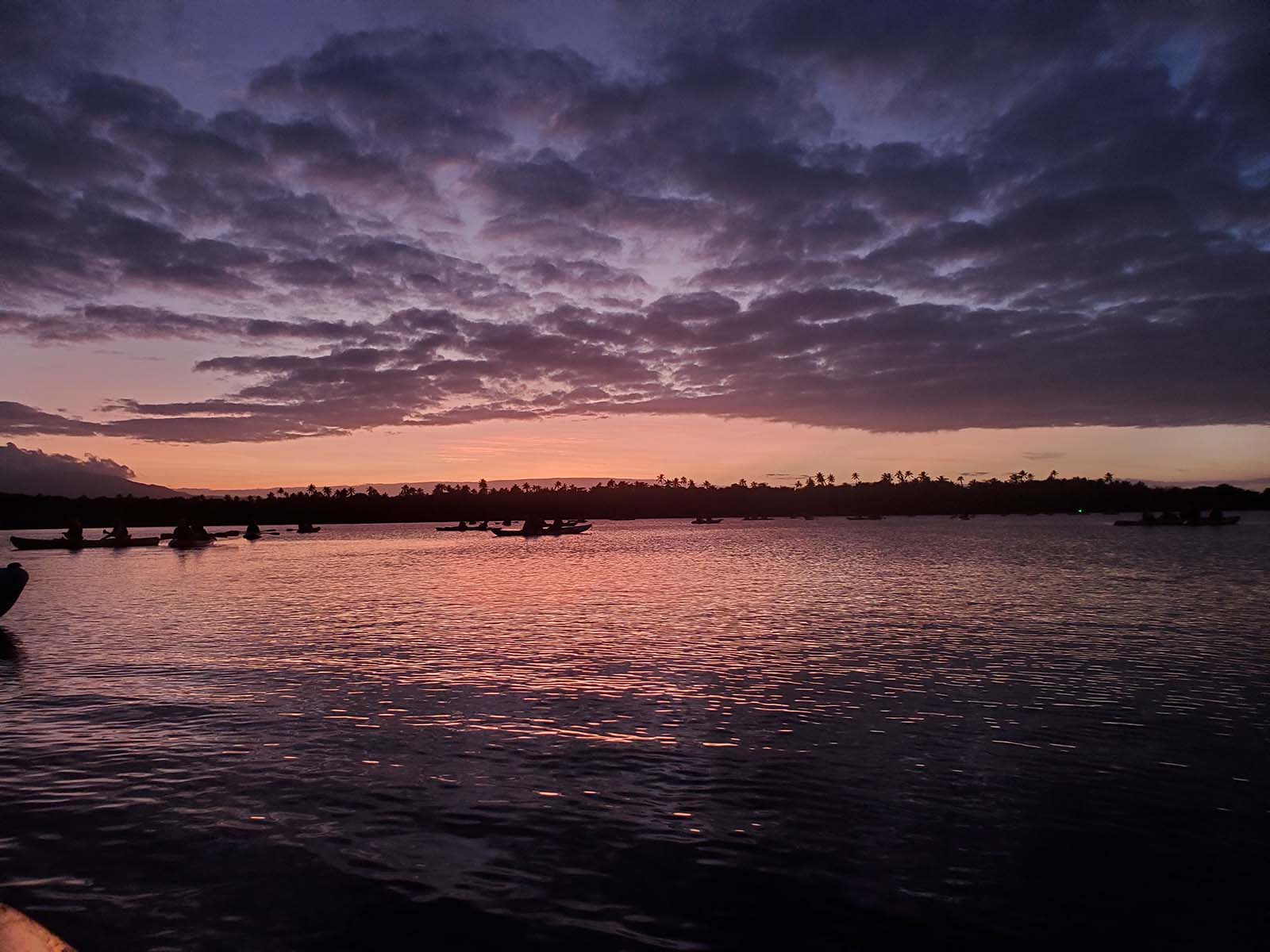
The first time I visited Bioluminescent Bay in Puerto Rico, it was a magical experience.
I’d booked it as a shore excursion on a cruise stop. After an hour bus ride, we arrived at the water’s edge just as the dark was settling in. There weren’t any lights in the surrounding area; I assumed we were at a marina. We each got into our kayaks, and left the Caribbean Sea to paddle down a river in the dark.
We couldn’t see the mangroves as much as we could feel their presence as they closed in on the river and hid the darkening sky. I don’t remember seeing stars at that point, but they must have been there. I was too scared thinking of creepy crawlies dropping out of the branches overhead.
Before we reached the bay I could see them. We entered into a magical world of wizardry as light streamed off the tail of the kayak in front of me. As each side of the paddle touched the water, light glowed around them, slowly disappearing as the paddle was withdrawn.
This was what we had come to see and the vision was glorious!
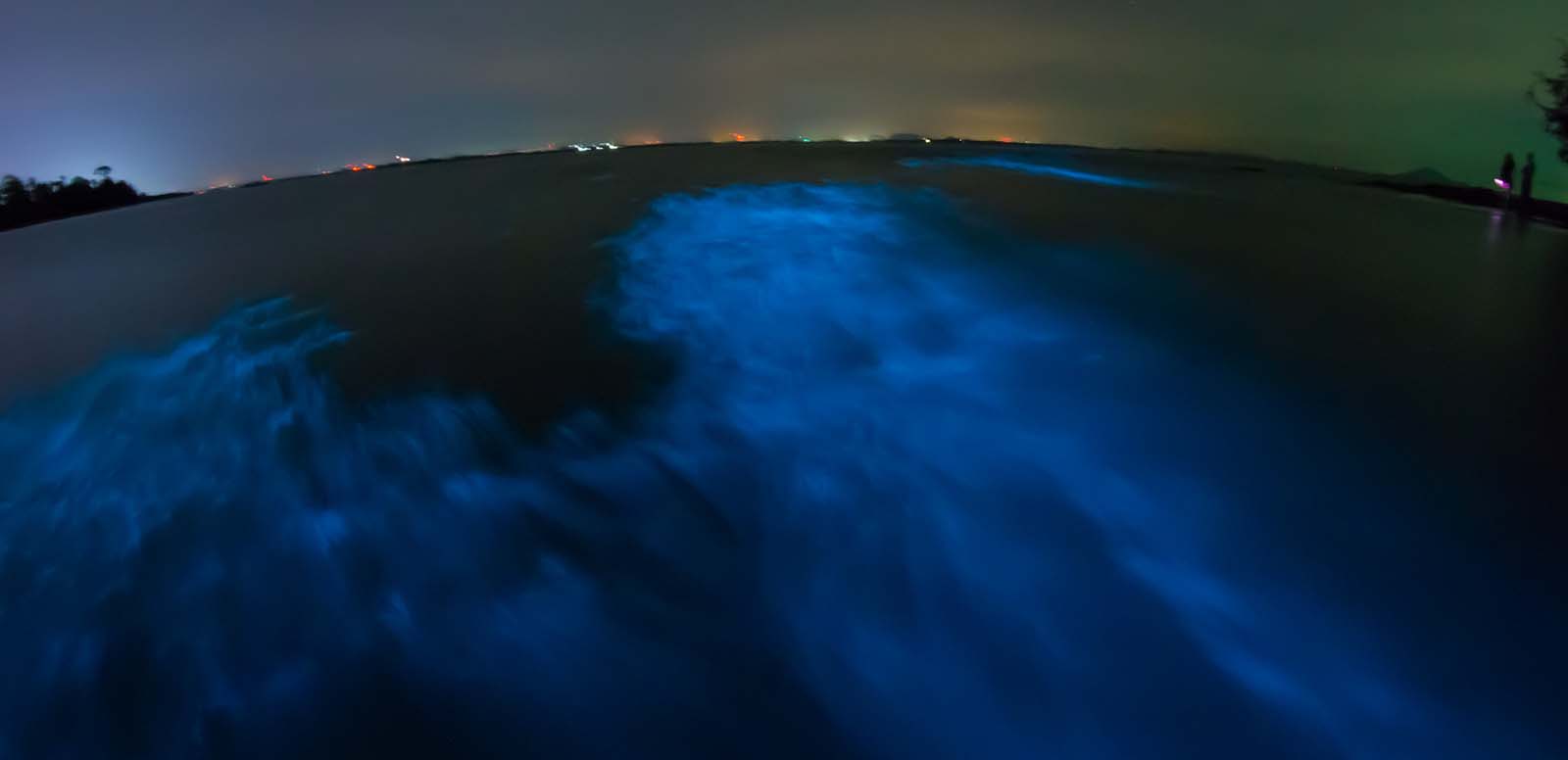
The single cell organisms called dinoflagellates glow when they are stimulated by movement. You can put your hand in the water, move it around, and they light up.
Imagine hundreds of fireflies under water.
We were the only people on the bay and our guide shared that the area had been seeing explosive growth; he was worried about the impact on the dinoflagellates.
It remains the most amazing thing I’ve ever seen on my travels.
When I returned to Puerto Rico, 20 years later, I was excited to experience the phenomenon again.
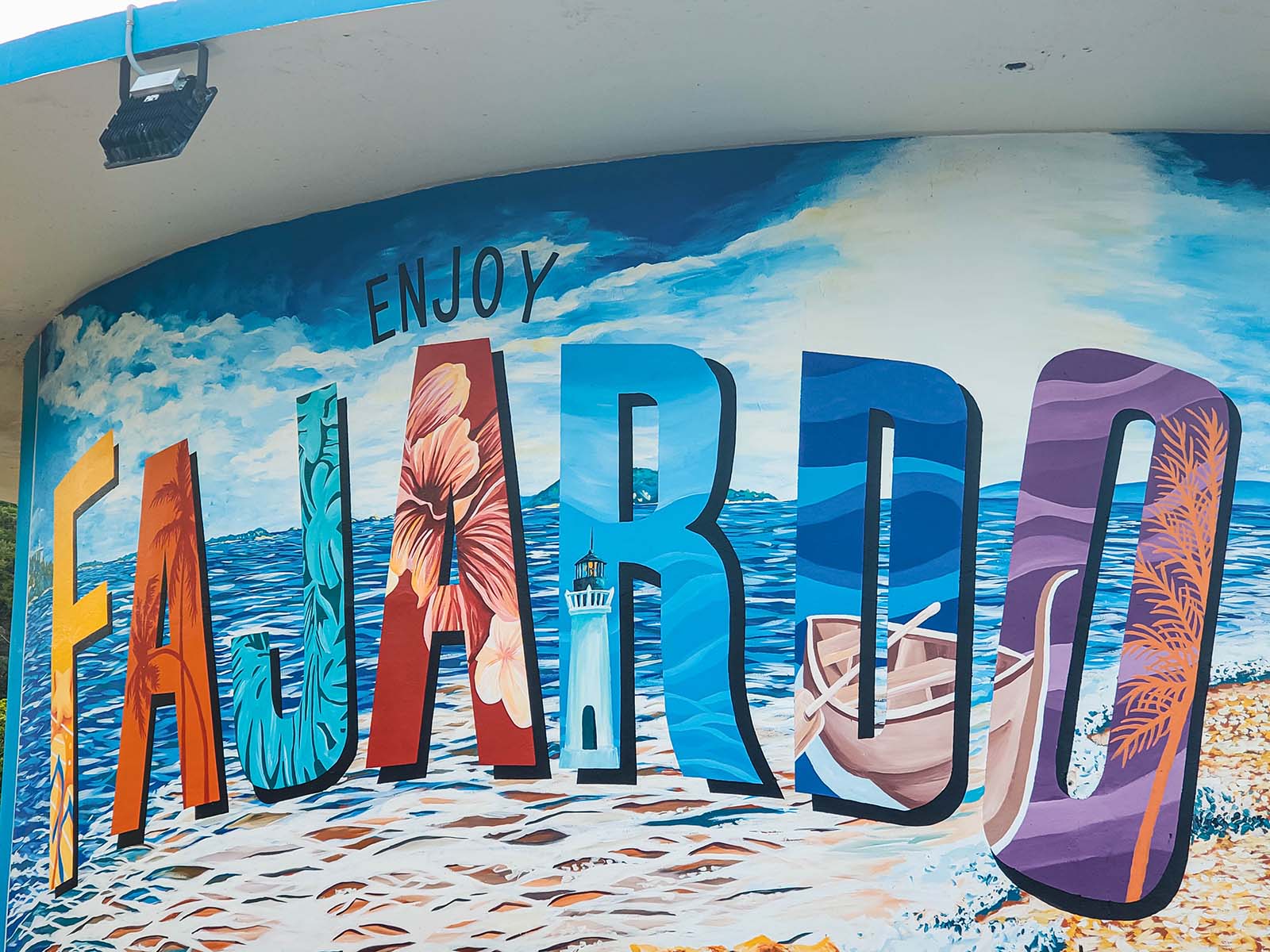
What I thought was a dark marina had been replaced with many small buildings, each one a tour company. There were even a couple of restaurants and bars.
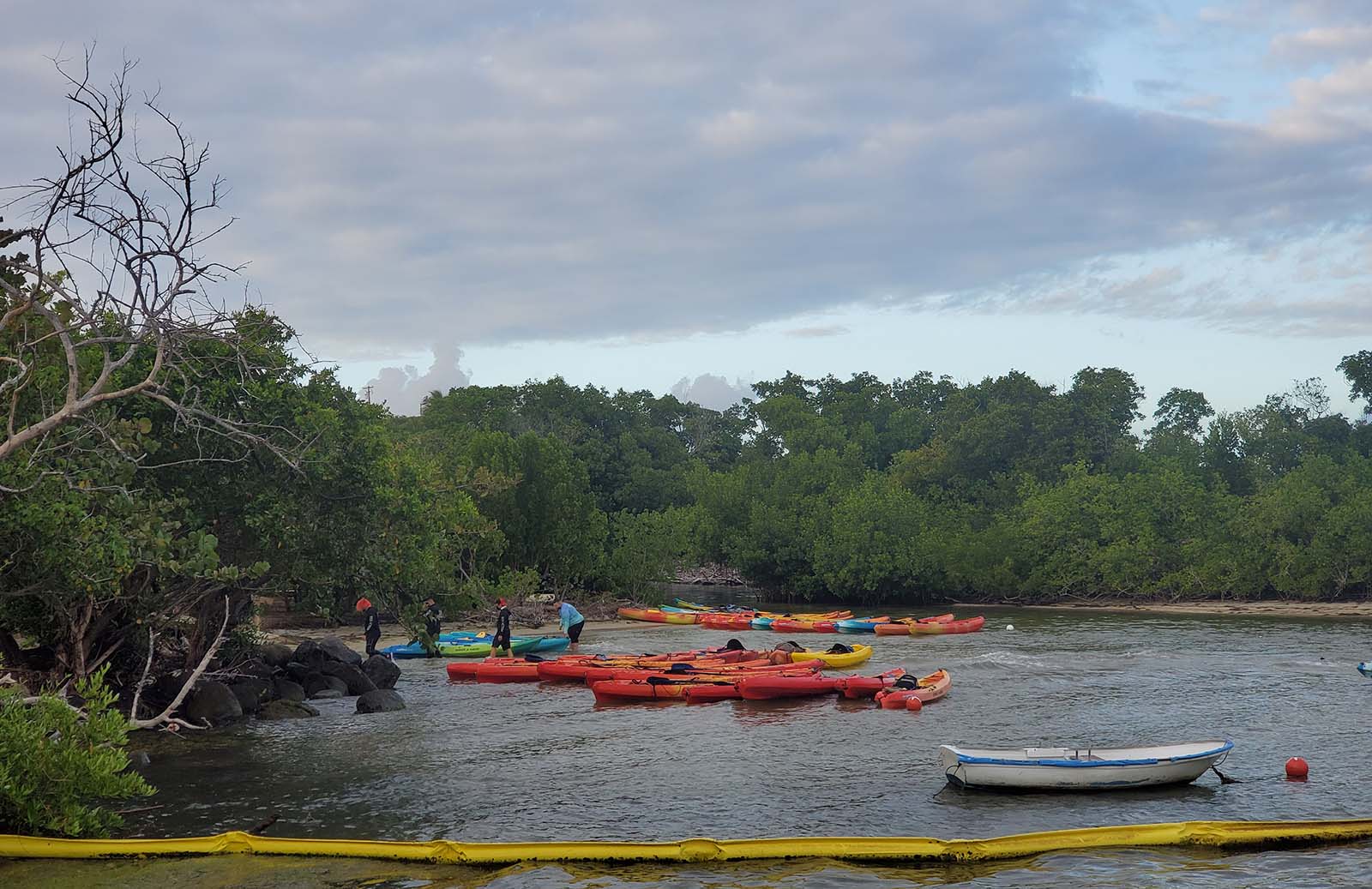
We left a bit early so the sun hadn’t quite set. It was fun to see the river with light, but there were swaths of mangroves leveled and dead.
There must have been a hundred kayaks on the bay, each one a two-seater. As it got dark, I could see a few random sparks when swirling my hand in the water. The guides connected all the kayaks side-by-side and gave us tarps to put over our heads to improve the chance of seeing the now elusive dinoflagellates. Everyone had a great time. They enjoyed the tour and seeing the few organisms light up on contact.
I was sad. The magic was gone and what I saw instead was a sputter.
Our guide, who likely wasn’t even born when I previously visited, said Hurricane Maria impacted the dinoflagellates food source when the trees were downed. These little organisms live off the B12 in tannins released by the red mangroves.
I wonder if my original guide would concur. I suspect the hurricane was only part of the story.
Never one to give up, we traveled to La Parguera on the southwest side of Puerto Rico to check out another bioluminescent bay. We boarded a pontoon boat at sunset to travel to Bahía Bioluminiscente de La Parguera. The evening ride was enough to make me happy, but we were there to experience the glow.
As the captain pulled into the bay, all the lights were turned off, except for an occasional flash that was reciprocated by each of the other boats in the bay to identify one another’s location.
Under a star filled sky, we slipped into the inky black water to swim among the dinoflagellates. The brightness of the night sky made it difficult to see them until we moved under the boat where the darkness invited them to come alive and dance between our moving fingers.
There are only five year-round locations where visitors can see the glowing single cell organisms in a bay. Three of them are in Puerto Rico. The brightest of all three is Mosquito Bay on Vasquez Island. If you plan to see them there, expect to stay overnight. The other two locations are Halong Bay in Vietnam and Luminous Lagoon in Jamaica. There are several more opportunities to see them around the world but their appearance is seasonal. Plan your trip on the darkest night without a moon, to get the best show possible.
